The first time you lay eyes on the Grand Canyon, it takes your breath away. There is no way for photos to capture its size and grandeur. It’s a place of superlatives – and has been a land of fascinating adventures and stories over the years.
Do you want to learn more interesting facts about the Grand Canyon? Let’s take a look at the Grand Canyon: facts and history.
If you are planning to visit Grand Canyon National Park by yourself, make your planning easy and stress free with a detailed itinerary. I have 1-, 2- and 3-day Deluxe Itineraries for the South Rim and a 1-2-Day Basic Itinerary for the North Rim that include all the park highlights, give you choices based on your preferred activity level, and take all the stress out of planning your trip
No time right now to read these fun facts about the Grand Canyon? Pin It and save it for later:
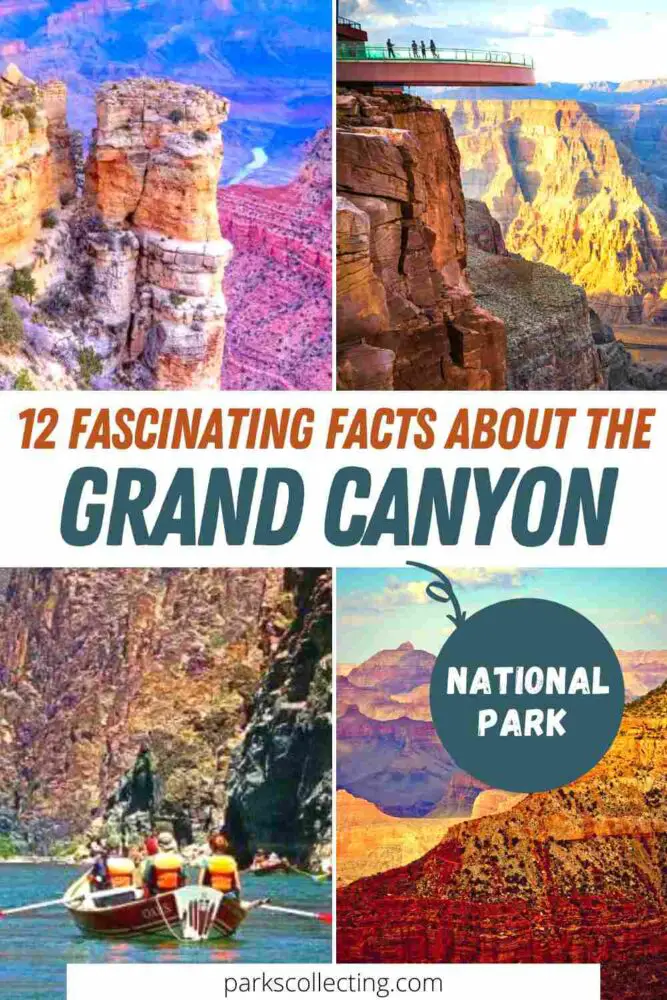
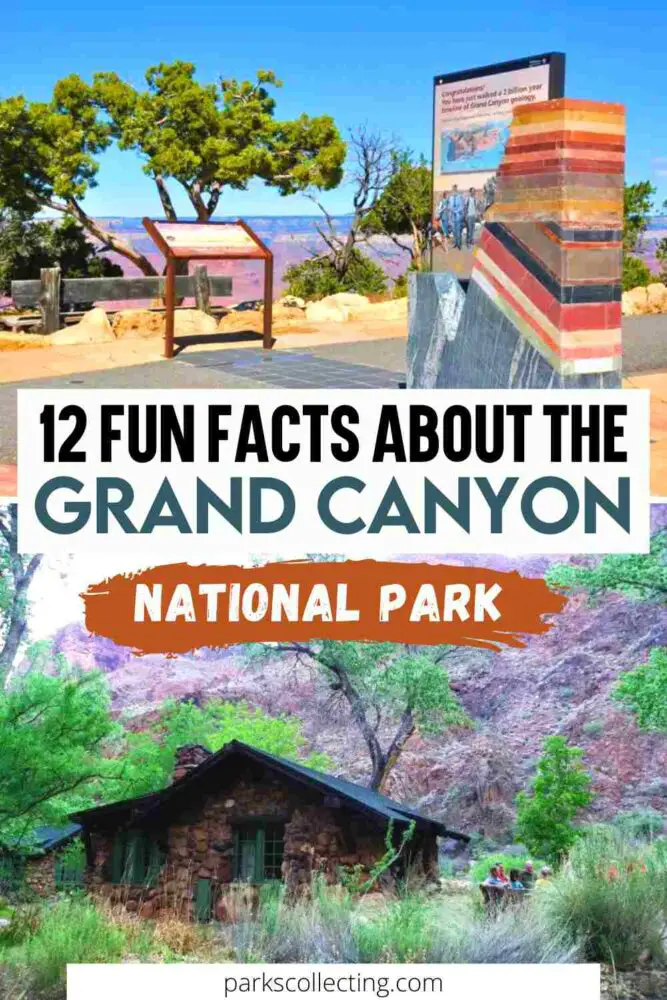
🛏️TOP HOTEL PICK: Check availability now
🚘FIND THE CHEAPEST CAR RENTAL: Search Discover Cars for the best deals
✈️FIND THE CHEAPEST FLIGHTS: Search Skyscanner for the best deals
🧳GET TRAVEL INSURANCE: Get insured with Travelex before you go
📱TAKE AN AUDIO TOUR: Buy an audio tour now
Table of Contents
The Grand Canyon Facts and History (the Basics)
⭐ Location: Arizona
⭐ Size: 1,217,403 acres
⭐ Number of Visitors each Year: 4.73 million people in 2022
⭐ Annual Rainfall: The North Rim receives an average of 27 inches of rain and 144 inches of snow each year. The South Rim receives an average of 16 inches of rain and 60 inches of snow each year. Phantom Ranch at the bottom of the canyon receives an average of 8 inches of rain and no snow in a typical year.
⭐ Highest Elevation: 9,165 feet at the North Rim Entrance
⭐ Lowest Elevation: 1,200 feet at the Colorado River
⭐ Date it Became a National Park: It became a national monument in 1908 and fully fledged National Park in 1919.
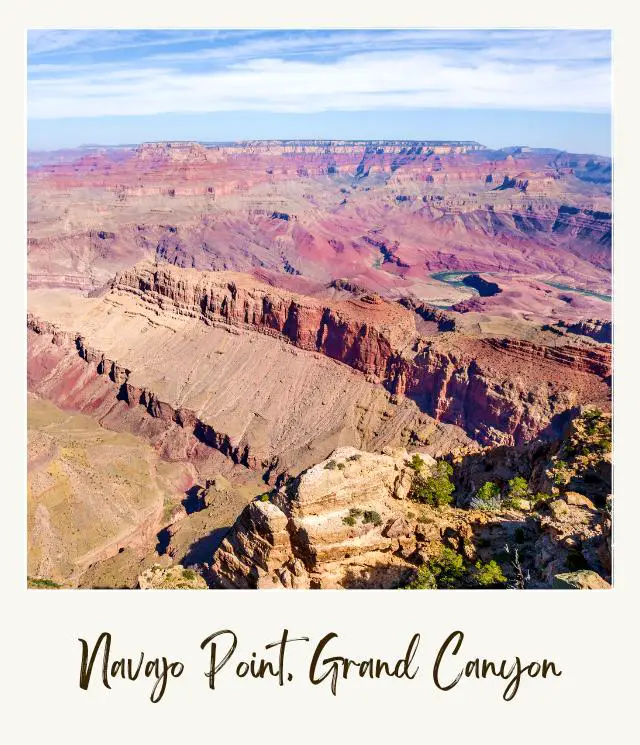
Subscribe to daily national parks planning tips, travel inspiration and trip ideas and get instant access to the free PDF
12 Fun Facts About the Grand Canyon
12 Fun Facts about the Grand Canyon
Want to discover 10 facts about Grand Canyon National Park? Well, here are 12!
1. The Grand Canyon is one of the Seven Wonders of the Natural World
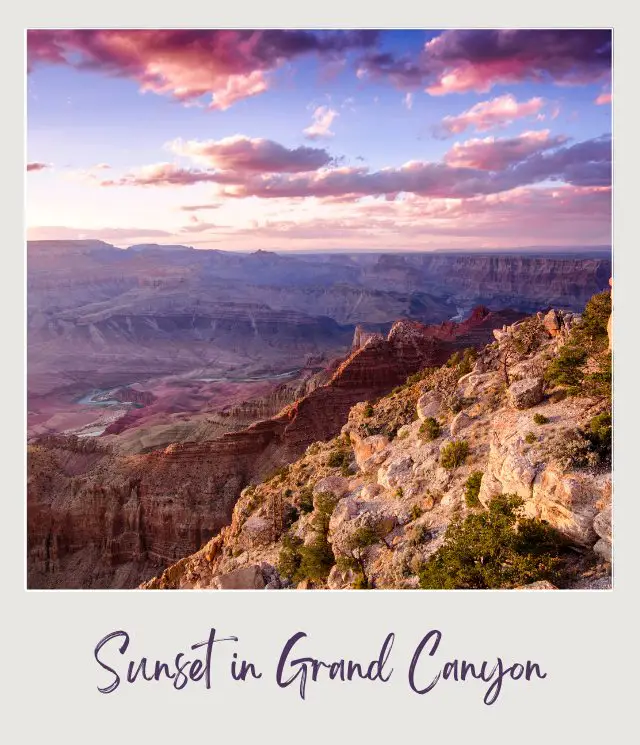
One of my favorite Grand Canyon National Park fun facts is that it’s one of the Seven Natural Wonders of the World. This puts it in the same company as Mount Everest, Victoria Falls and the Great Barrier Reef.
Grand Canyon was formed by the Colorado River eroding a path through layers and layers of rock over millions of years. All that erosion has created a really big canyon. The Grand Canyon is 277 miles (446 km) long, 18 miles (29 km) wide at its widest point, and over a mile (1,857 meters) deep!
➡️ Read more: Best Viewpoints of the Grand Canyon
2. The weather in Grand Canyon varies wildly
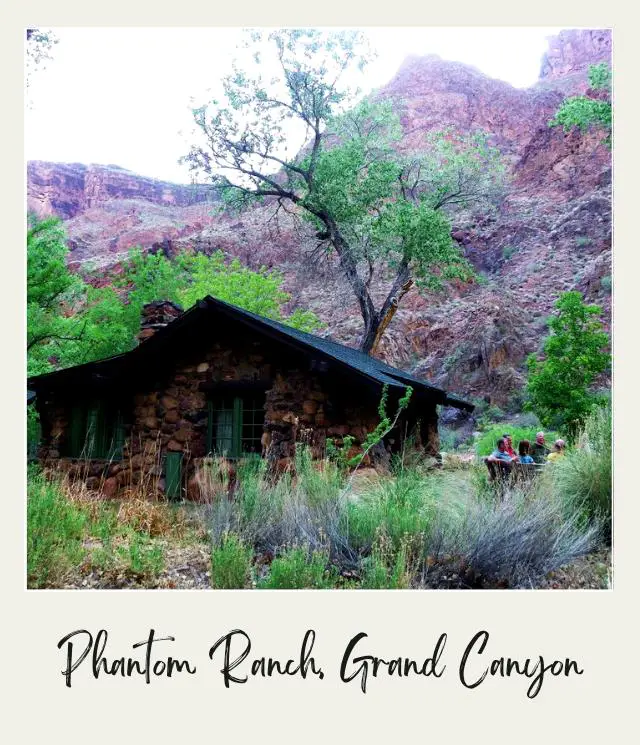
One of the more interesting pieces of Grand Canyon information and facts relates to the weather. Given its incredible size, it’s not surprising, perhaps, that the weather can vary radically depending where you are. The temperature on the rim and at the bottom of the canyon can vary as much as 25 degrees at any given time.
There is a significant difference even at the rims. The North Rim is about 1,000 feet (300 meters) higher than the South Rim. Winters at the North Rim are bitter and the entire area is snowed in an inaccessible for about 6 months of the year.
The South Rim, on the other hand, will often get a light dusting of snow, and is open year-round.
The bottom of the canyon is much hotter and gets no snow in winter and its scorching hot in summer.
Phantom Ranch, the only place other than camping that you can stay at the bottom of the canyon inside the national park, is the hottest, and one of the driest places in the national park. The highest temperature recorded in Grand Canyon National Park was 120°F at Phantom Ranch.
The coldest and wettest place is just eight miles away, at the North Rim’s Bright Angel Ranger Station. The lowest temperature recorded in the national park was a chilly –22°F. That’s a difference of 144°!
➡️ READ MORE: If you’d like to stay inside the canyon, read my guide: How to Stay at Phantom Ranch
3. No one is quite sure how old the Grand Canyon is
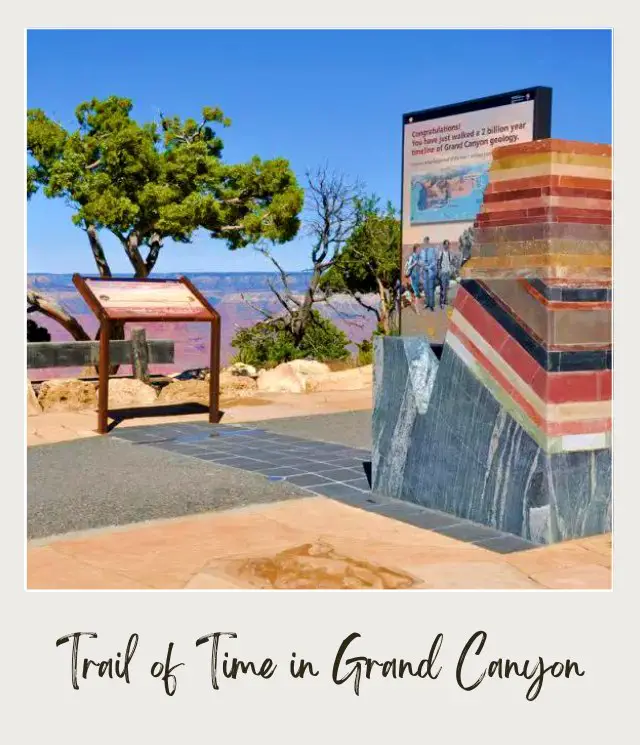
Another of the more interesting facts about the Grand Canyon National Park is its age.
So, how old is it? Well, if you’d asked that question a decade or so ago, geologist would have told you that the Colorado River started carving its path through the area about 6 million years ago.
But, since you’re asking now, the answer is a definite, possible, maybe 70 million years. A new study in 2012 suggested that the process of erosion began much, much earlier than previously thought.
No one is quite sure, but it seems likely that smaller side canyons started being formed about 70 million years, but the larger main canyon began appearing sometime after that.
What is known for sure is that it’s very old.
➡️ READ MORE: Learn more about the carving of the canyon in this comprehensive book Carving Grand Canyon: Evidence, Theories, and Mystery by W. Ranney
4. There are fossils of ancient sea creatures in the Grand Canyon
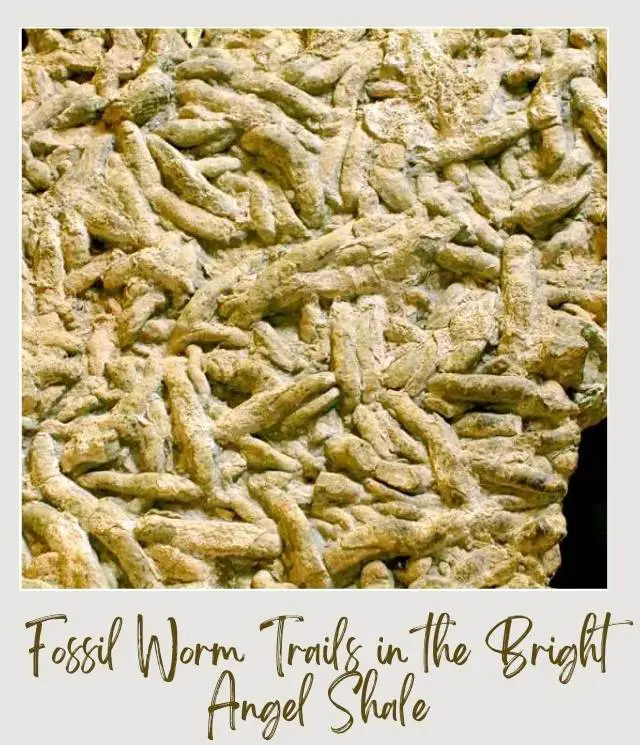
Another of the Grand Canyon National Park facts is that there are fossils – lots of fossils – inside the canyon. There are ancient fossils of marine creatures more than 1.2 billion years old! They range all the way to very young fossils of land mammals just 10,000 years old.
That’s a lot of history trapped in the rocky layers of the canyon.
READ MORE: Are you fascinated by fossils? Check out An Introduction to Grand Canyon Fossils by D. Thayer
5. There’s a town inside the Grand Canyon
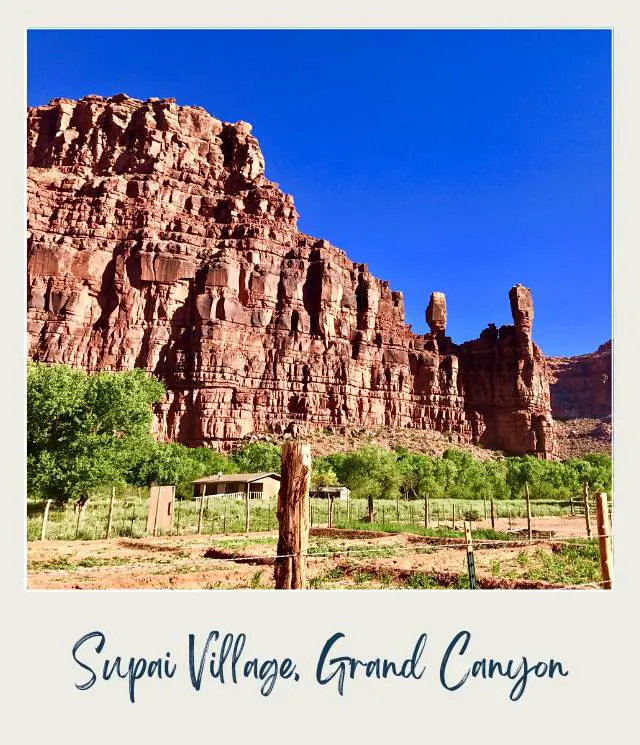
Another of the Grand Canyon interesting facts is that there is a town inside the canyon. Located just outside the national park, Supai is on the Havasupai Indian Reservation.
Accessible only by an eight-mile hike or a helicopter ride, it’s the most remote village in the contiguous United States and the only place in the United States where mail is delivered by mule.
There are just 208 residents, but it is possible to stay overnight. There’s a store and café in the village in addition to a tourist lodge. A campground is a further two miles along, near the spectacular Havasu Falls. Reservations are required before entering the Havasupai Reservation.
You can visit the official Havasu Tribe website for more information.
➡️ READ MORE: Exploring Havasupai: A Guide to the Heart of the Grand Canyon by G. Witt
6. The first European to ride the rapids of the Colorado River through Grand Canyon was a one-armed man
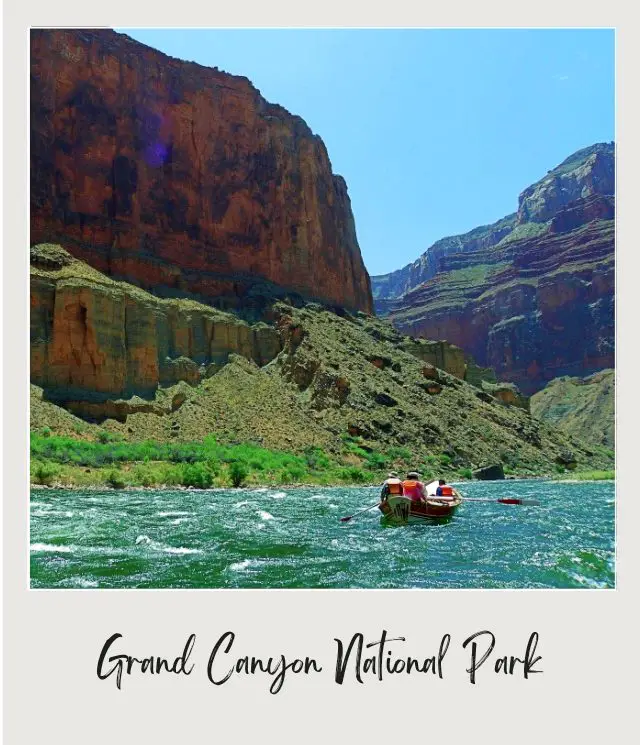
Some of my favorite Grand Canyon history facts are about the famous one-armed explorer, John Wesley Powell.
Powell had already had a life full of adventure before venturing through the Grand Canyon. He’d walked across Wisconsin; rowed the length of the Mississippi River from Minnesota to the sea; rowed from Pittsburgh to St Louis; lost an arm in the Civil War; worked as a professor of geology; and was one of a group of men who were the first documented white men to climb Long Peak in the Rockies.
Then, in 1869, he became the first documented white person to successfully navigate the white water rapids of the Green and Colorado Rivers through the entire length of the Grand Canyon from Green River, WY to St. Thomas, NV.
The three-month trip wasn’t without incident. Ten men set out in four wooden boats called dories. On the trip, they lost one boat, all their equipment for recording the trip, about 1/3 of their supplies and four men. One left after a month, and survived. Three more left in the third month at what is now called Separation Canyon and were never seen or heard from again.
Two years later, Powell did it all over again, but with better equipment and three photographers, which resulted in photos, a map, and a more accurate and detailed description of the canyon.
READ MORE:
➡️ Read more about Powell’s epic journey down the Colorado River in Down the Great Unknown: John Wesley Powell’s 1869 Journey of Discovery and Tragedy Through the Grand Canyon by E. Dolnick
➡️ You can follow in Powell’s footsteps and ride in a wooden boat (dory) or a modern raft through the canyon. Read my Guide to River Rafting in the Grand Canyon for more details.
7. It used to be called the Big Canyon
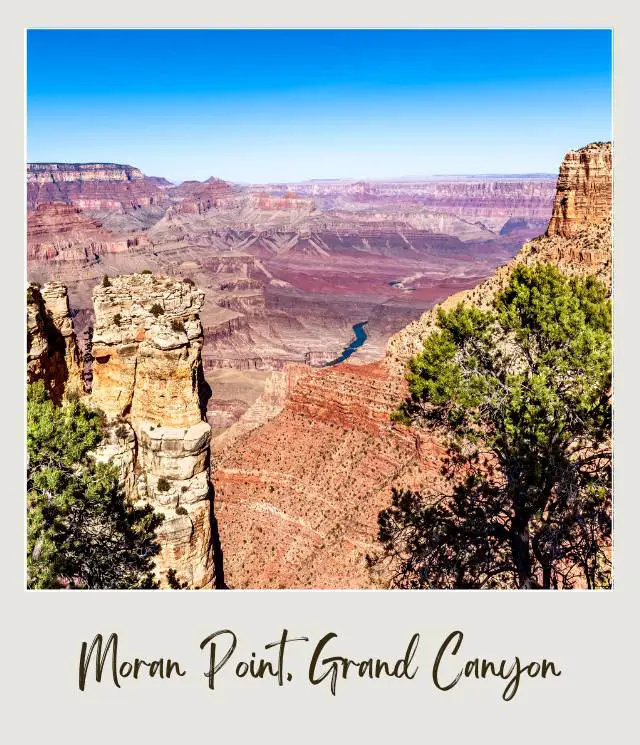
What are some nicknames for the Grand Canyon?
Prior to 1869, the canyon was called Big Canyon. It was John Wesley Powell who popularized the slightly more poetic sounding Grand Canyon.
The Paiute Indians called the canyon “The Mountain Lying Down.”
My favorite, though, is a common slang name still used in Arizona: “The Big Ditch”.
➡️ READ MORE: If you’re interested in names, check out Grand Canyon Place Names by G. McNamee
8. Tourism photography was invented at the Grand Canyon – and the longest running movie ever was shown there
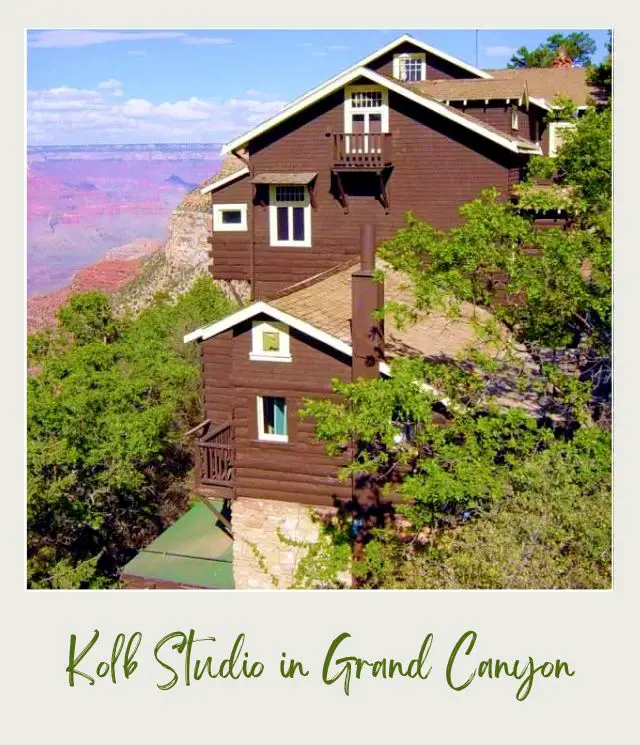
Here’s some Grand Canyon trivia for you. Tourism photography was invented by the Kolb Brothers at the Grand Canyon.
Ellsworth and Emery Kolb started out with a photography studio in William, AZ mostly taking photos of saloon women. They realized, however, the opportunities for taking photos of visitors to the Grand Canyon and moved there in 1902.
In 1904, 15 years before Grand Canyon became a national park, the brothers set up shop in a small studio perched right on the edge of the canyon. It was right near the start of the Bright Angel Trail, so they could photograph people as they descended into the canyon on donkeys.
This became their home, photography studio, and theater for their slideshows and films. It was the first permanent commercial photographers’ studio at the canyon and one of the earliest commercial tourist businesses there.
In 1911, the brothers were part of the eighth successful expedition on the Colorado River through the Grand Canyon. They filmed their harrowing journey and turned it into a documentary.
After a transcontinental trip promoting the film, Ellsworth moved to Los Angeles. Emery, however, moved back to the Grand Canyon, where he regularly showed the movie they had made of their trip through the canyon. The movie ran from 1915 until his death in 1976. The 61-year run makes it the longest running movie of all time!
Today, there’s an art gallery, bookstore and information booth operated by the Grand Canyon Conservancy inside the historic building. There are also great views of Grand Canyon from the studio.
➡️ READ MORE: Visiting Kolb Studios is just of the things to do on the South Rim of Grand Canyon. Read more fun things to do in Grand Canyon National Park.
9. You can find pink snakes in the Grand Canyon
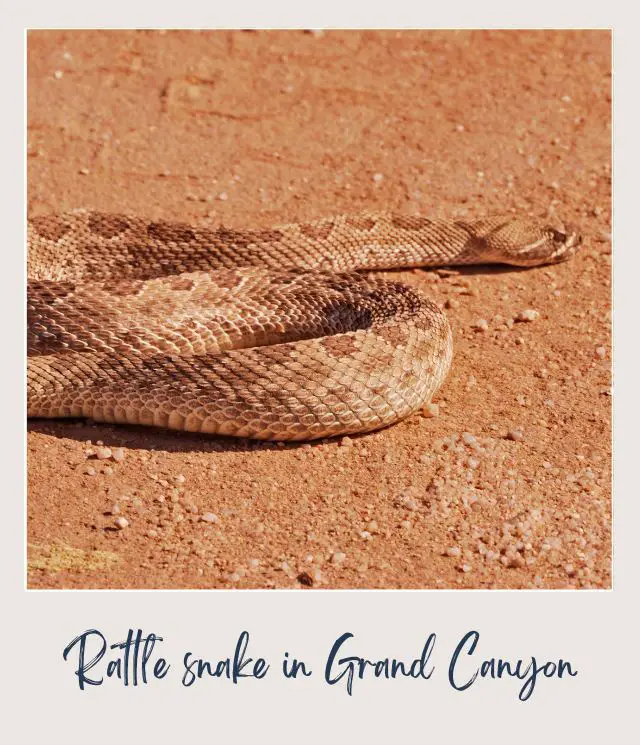
Here are some more fun facts: Grand Canyon is home to six species of rattle snakes.
The most common of them are pink! So, yes, if you see a pink snake, you are not seeing red or looking at the world through rose-colored glasses. The Grand Canyon Pink Rattlesnake (crotalus oreganus abyssus) is only found in the Grand Canyon and its color helps it blends into the reddish rocks around it.
These snakes are usually found on rocks and sandy trails looking for lizards to eat. They are dangerous, so don’t try to pick one up, but they are generally more scared of you than you are of them.
➡️ READ MORE: If you’re into identifying animals, pick up the Field Guide to the Grand Canyon: A Folding Pocket Guide to Familiar Plants & Animals (Wildlife and Nature Identification) by J Kavanagh
10. Squirrels are the most dangerous animals in Grand Canyon National Park
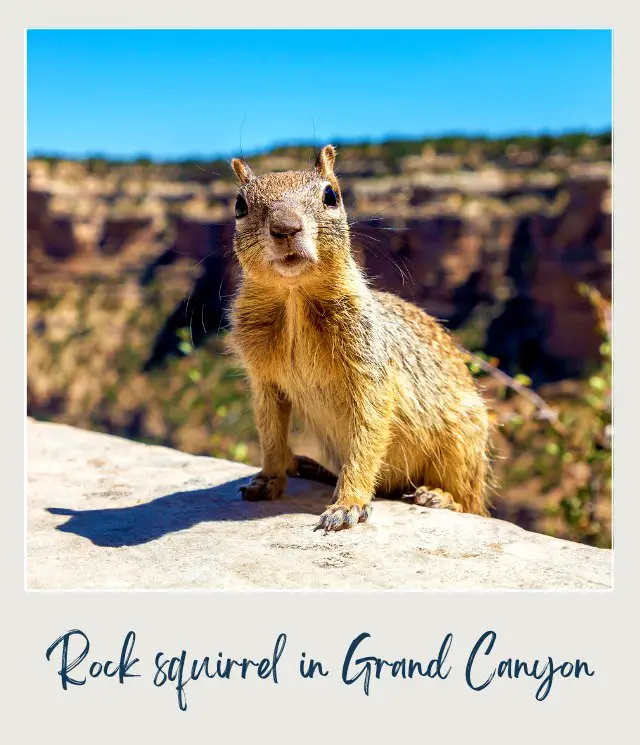
You can find not only rattle snakes in Grand Canyon, but also mountain lions, coyotes, foxes, bats, big horn sheep, and elk. However, none of these are the most dangerous animal in Grand Canyon National Park. That honor goes to the humble rock squirrel.
This is one of the most surprising Grand Canyon facts and information, right?
These furry critters may look cute – but they are feral and they bite. They attack more visitors to the Grand Canyon than any other animal. This may not sound like a big deal, but their bites can be severe, require stitches, and get infected.
So, don’t feed them, stay well away, and don’t turn your back on them. That cute selfie with a squirrel could quickly take a turn for the worse!
11. There are 1,000 hidden caves in the Grand Canyon

Grand Canyon facts and trivia reveal that the Grand Canyon is home to about 1,000 caves. For comparison, Carlsbad Caverns has only around 120!
Of these, only 335 have been explored and recorded.
And of those 335, only one is open to the public without special permission. The Cave of the Domes is reached on a difficult 3.5-mile hike down the Grandview Trail and across Horseshoe Mesa.
Other caves can be visited with a permit; however, they are currently closed and only allowed for research purposes. Unfortunately, park officials routinely deal with unauthorized cave access and even vandalism by visitors who attempt to carve into the natural rock walls. These marks are irreversible due to the delicate preservation quality of the caves.
The caves vary in size: Some are so low and narrow you can only enter on all fours, while others are roomy enough to spin in without touching the walls.
These caves are some of the more fascinating features of Grand Canyon National Park. The network of caves and caverns within the steep walls is filled with the mummified remains of Ice Age fauna and some archaeological remains. For tens of thousands of years, these hard-to-reach crannies have sheltered wood rats, bats, birds, and now-extinct mountain goats and sloths.
The bone-dry conditions create an ideal preservation environment, allowing researchers to peer back into over 40,000 years of history and get a sense of a world that existed when much of North America was covered in a thick sheet of ice.
➡️ READ MORE: Read all about a possible treasure cave hidden deep in Grand Canyon and filled with Aztec gold in Grand Canyon Treasure Cave! By R. Crawford
12. Grand Canyon was saved from damming by the Sierra Club
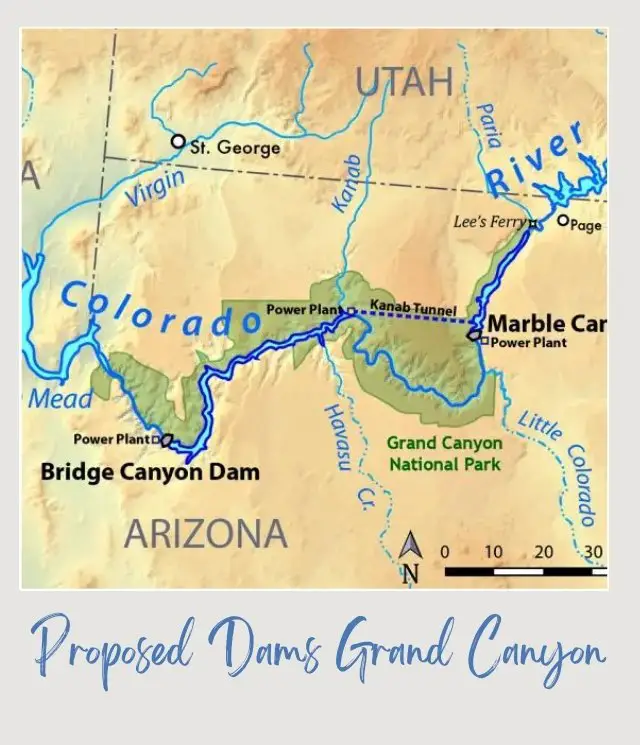
If you interested in environmentalism, this is one of the more interesting and important facts about the Grand Canyon to know.
From the 1920 through the 1960’s, two dams were proposed at either end of the Grand Canyon, Bridge Canyon and Marble Canyon (also known as Redwall Dam) as part of a hydroelectric scheme.
According the Sierra Club, who campaigned vociferously against them, the dams would have backed up lakes into 148 miles of canyon gorge, up to 600 feet deep, and reduced the Colorado River through the rest of the canyon to a trickle.
Fortunately, as a result of the public outcry that ensued, neither dam was built.
The Marble Canyon site became part of a new Marble Canyon Monument in 1968, which was added to Grand Canyon National Park in 1975.
The fact that the dams were never built is a great example of public opinion influencing congress and the success that environmental organizations can achieve.
There are, of course, two major reservoirs either end of the Grand Canyon, but neither of them are inside the canyon itself. Lake Powell that was created by Glen Canyon Dam and Lake Mead lies behind Hoover Dam.
➡️ READ MORE: See the original Sierra Club ads from 1966 protesting the two proposed dames.
More Information About Grand Canyon National Park
Now that you’ve discovered these 11 fun facts about the Grand Canyon National Park, are you feeling inspired to visit Grand Canyon National Park? Start planning your trip now with these guides:
⭐ Grand Canyon Guide
⭐ Grand Canyon South Rim Deluxe Itinerary
⭐ Grand Canyon North Rim Basic Itinerary
⭐ Planning A Trip to Grand Canyon National Park: 7 Mistakes to Avoid
⭐ How Long to Stay in Grand Canyon National Park
⭐ White Water Rafting In The Grand Canyon
⭐ Best Things To Do In Grand Canyon (South Rim)
⭐ Best Grand Canyon Viewpoints
⭐ Guide To Making Reservations For Phantom Ranch, Grand Canyon
⭐ The Complete Guide To Hiking The Bright Angel Trail, Grand Canyon
⭐ How To Get To Grand Canyon National Park
⭐ The Best Airports Near The Grand Canyon
⭐ The Airport Nearest Grand Canyon National Park
⭐ The Best Time to Visit Grand Canyon National Park
⭐ Visiting Grand Canyon National Park: What To Expect Throughout the Year
⭐ Best Books about the Grand Canyon
⭐ Vacation Rentals In and Near Grand Canyon National Park
⭐ Vacation rentals in Flagstaff
⭐ Vacation rentals in Sedona
⭐ 15 Top Tips for Visiting Grand Canyon National Park
Do you have any other Grand Canyon fun facts to share? I’d love to hear them. Join my private Facebook group National Parks Collectors and comment and let me know (you can also pick up extra planning tips, share your photos and stories with other national park lovers and more).
Subscribe to daily national parks planning tips, travel inspiration and trip ideas and get instant access to the free PDF
12 Fun Facts About the Grand Canyon
If you liked this article sharing the Grand Canyon facts, please share the love and Pin It to your Grand Canyon National Park board!


💡Are you just starting to think about taking a national parks trip? Get Inspiration
‼️ Are you looking for helpful tips for visiting US national parks? Read articles that share useful tips on a range of national-park related issues
💻 Are you starting to plan a trip to Grand Canyon National Park? Read my Guide to Grand Canyon National Park
📋 Do you want a ready-made super detailed plan for your trip to the Grand Canyon? Get a Deluxe 1 – 3-day South Rim Itinerary and Get a Basic 1-2-day North Rim Itinerary
🛏️ Are you looking for a place to stay near Grand Canyon National Park? Find a vacation rental near Grand Canyon National Park
💲 Are you ready to book your trip? Use these Planning and Booking Resources
📖 Do you want to read a book about Grand Canyon National Park? Check out my Recommended Reading List for Grand Canyon National Park
About the Author
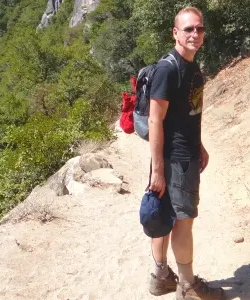
James Ian is a national park, camping and hiking expert.
He has dedicated his life to travel, visiting more than 80 countries, all 7 continents and most of the national parks in the United States. With over 35 years experience in the travel industry, James has worked on cruise ships, at resorts and hotels, and as a travel planner who’s helped hundreds of people plan successful trips to US national parks.
Based on his experience visiting our national parks multiple times, in-depth research and expertise as a travel planner, James has published detailed itineraries for many of the major national parks in the US. These itineraries, as well as in-depth park guides, and other resources will help you have your own incredible trip to US national parks without stress and hassle.
As a national park expert, James has contributed to many publications, including USA Today, Newsweek, Time Business News, Savoteur, Best Trip, and Wired.
I’m a member of the Amazon Services LLC Associates Program. As an Amazon Associate I earn from qualifying purchases.
